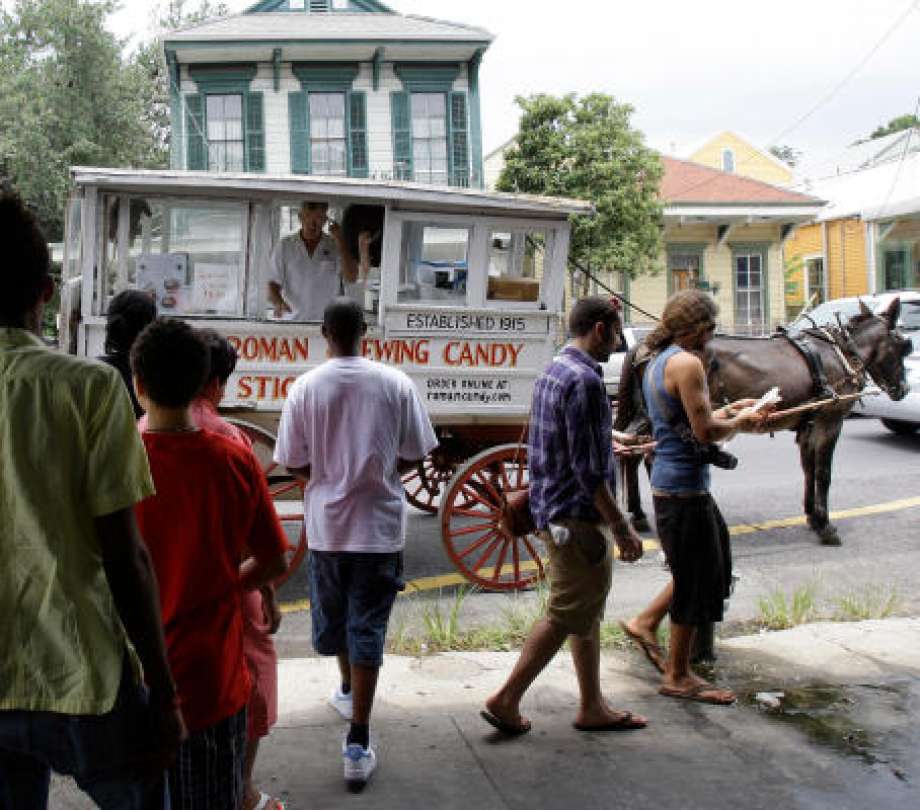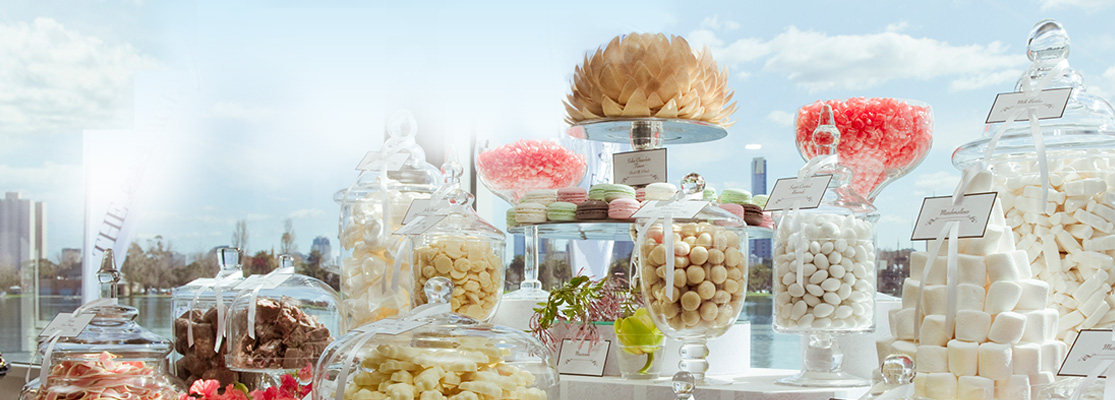NEW ORLEANS — The shadows are growing long as the Roman Candy man’s mule-drawn wagon rattles up Camp Street, a narrow, potholed thoroughfare that meanders along the Mississippi west from the city’s heart. It’s been a long, hot day for Ron Kottemann and Ada, the mule, and now, with a few unsold taffy sticks piled at the open window and a fistful of dollar bills, the pair is heading home.
For four decades, Kottemann has plied the sales routes his grandfather Sam Cortese charted more than 90 years ago. He uses the same carnival-colored wagon and sells the same candy — foot-long vanilla, chocolate and strawberry twists based on the recipe his great-grandmother brought from Sicily.
Single-handedly, Kottemann, 60, has preserved a family tradition he hopes lives beyond his own lifetime. But the city he traverses at a clip-clopping 4 mph isn’t the city of his grandfather, nor even that of a few years past.
‘It was just devastating’
Hurricane Katrina, leading to ruptured levees and catastrophic flooding, changed everything.
With an estimated 337,000 residents, New Orleans is 30 percent smaller than it was before Katrina’s 2005 assault. The hard-hit Mid-City, Lakeview, Lower Ninth and New Orleans East neighborhoods struggle with varying success to recover.
Since Katrina, Kottemann has concentrated his sales in the city’s central business district and the largely unflooded riverside uptown neighborhoods. Returning to the city almost three months after the storm, he was greeted by a daunting sight.
“It was just devastating,” he said. “Just block after block, you’d see high-water lines everywhere.” Even now, sections of the city remain scarred. “In Mid-City,” he said, “you’re lucky if half are back. Now in Lakeview, there aren’t nearly as many houses. A lot were torn down. … The Lower Ninth still looks like a nuclear blast.”
Kottemann’s own home, though on high ground, was heavily damaged. And in the storm’s aftermath, he desperately sought to arrange for the rescue of his mule from her backyard stable. “I had left her with an automatic feeder and extra water,” he said, “but I thought I’d be back home in three days.”
Back in the city, living in his house’s one habitable room, Kottemann was determined to get back to work.
“I’m a street vendor,” he said. “That’s what I do.”
The candy man’s first post-Katrina run was to St. Charles Avenue, where emotional customers wept at his approach.

‘The mule is back!’
New Orleans writer and food advocate Poppy Tooker recalled the Roman Candy wagon’s reappearance on local streets as a joyous event for storm-burdened locals. “E-mails flashed all over town,” she said. ” ‘The mule is back! The mule is back!’ “
Five years after the deluge, locals still find comfort in the Roman Candy wagon’s approach. “They are just glad for any sign of normality,” Kottemann mused as his wagon rolled homeward.
More than once on this midsummer day, customers tarried to reminisce of their decades-old encounters with Kottemann’s grandfather. “I remember when a stick of candy was 7 cents,” said one. Now the candy costs $1.
“He’s wrong. It never was 7 cents,” Kottemann whispered to a companion. “Streetcars were 7 cents. Candy was 5 cents.”
Kottemann’s work day began at midmorning, rolling down a residential street near the river, ringing a gong-like bell to announce his approach. While in motion, the wagon largely is under the guidance of Ada, who, though initially plagued by a mulish reluctance to walk in a straight line, negotiates traffic as deftly as anyone in the city.
At the pair’s frequent stops, Kottemann peddles taffy – and tends to the cooking, pulling and wrapping.

Took reins after Vietnam
Kottemann began making rounds with his grandfather as a child. In those years, the older Cortese traveled throughout the city, ferrying across the Industrial Canal to reach Chalmette and the Mississippi to sell in Algiers.
Cortese, who lost both legs below the knees in a childhood streetcar accident, sold vegetables from a goat-drawn cart before launching his candy route in 1915. It was he who named the traditional Italian taffy “Roman Chewing Candy,” out of concern for anti-Italian sentiment then prevalent in the city.
With his candy earnings and those received from selling coal and firewood in the winter, he supported a family of daughters. He worked until two months before his death at 80 in 1969.
Kottemann took over the business when he returned from Vietnam.
In the mid-1980s, Kottemann added a second candy wagon to his fleet, stationing it at the Audubon Zoo, where he tends it several days a week.
“I only have eight wheels and two wagons,” he said. “If something goes bad, I have to stop and fix it. … The last wheelwright in the city died seven, eight, maybe 10 years ago.”
Despite the rigors of the one-man, one-mule business, Kottemann said he is optimistic that the future for his taffy is bright.
Paradoxically, Hurricane Katrina breathed new life into his moribund Internet candy sideline. Now, he said, he sometimes gets as many as eight sales a day online. Former New Orleans residents seeking a taste of home can buy the treats at www.romancandy.gourmetfoodmall.com/.
“I have a lot of confidence it’s going to sell,” Kottemann said, “just as long as there are warm bodies to sell it to.”



